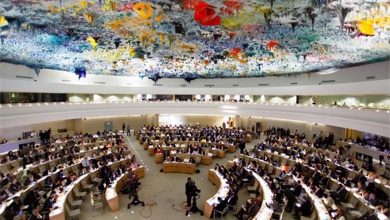Saudi Arabia’s budget surplus does not stop the train of loans amid economic warnings

Despite the expectation of another budget surplus in Saudi Arabia in 2023, the authorities are heading to obtain more external financial loans at the level of bonds amid economic warnings of the repercussions of gradually flooding the Kingdom with debt.
Officials revealed that Saudi Arabia is seeking to approve more fixed-rate loans with high borrowing costs and obtain them in various currencies besides the dollar. This is to reduce part of its outstanding floating rate debt.
The CEO of the National Center for Debt Management in the Kingdom, Hani Al-Madani, said in an interview with Bloomberg, “We have not finished interest rate risks. This is why we were quick to issue bonds given the positive momentum in the market, which we witnessed at the beginning of 2023.”
Despite the expectation of another budget surplus in 2023, Saudi Arabia raised $10 billion from a bond sale in early January, the largest sovereign deal in emerging markets in nearly three years.
The Kingdom had already borrowed about 48 billion riyals ($12.8 billion) of refinancing needs for this year. Its sale of the bonds in January means it has implemented most of the borrowing planned for 2023.
However, the Kingdom’s government is looking for a different borrowing, which Al-Madani expressed by referring to options that include the euro or other international currencies, as well as green bonds, indicating that any other issuance of bonds will be “subject to market conditions.”
The Saudi government is seeking more borrowing to “accelerate the implementation of the goals of Vision 2030,” which aims to diversify the economy of the world’s largest oil exporter.
Fixed-rate debts will constitute about 90% of Saudi government borrowing by the end of this year, as the Debt Management Center is looking to stabilize interest rates, according to Al-Madani, noting that fixed-rate debts represented about 85% of the Kingdom’s total loans by the end of the past year.
He added that they are in a very strong position when it comes to absorbing the high-interest rate environment. But they will not sit back and enjoy this situation and continue strengthening it further.
This comes as it was revealed that Saudi Arabia sold bonds worth $10 billion in 3 tranches, taking advantage of an opportunity to benefit from the debt markets amid strong investor appetite for Gulf debt issues.
A document from a bank published by Reuters stated that Saudi Arabia sold $3.25 billion in bonds with 5-year maturities at 110 basis points above the price of US Treasury bonds.
As for the tranche for 10.5 years, its value amounted to $3.5 billion at about 140 basis points above the price of US Treasury bonds and another $3.25 billion for the tranche for 30 years at 5.5%.
The pricing of the three tranches of bonds declined from the indicative price that appeared earlier in the day, with investor appetite, while the order book exceeded $35 billion before closing.
In the context, Justin Alexander, director of Gulf Economics, said: “The timing (of the issue) is somewhat surprising, given the surplus and the indications that the October bonds are financing 2023 maturities in advance.”
“But that appears to be opportunistic given the modest drop in returns from the most recent peak, which unfortunately was around the time of the October issue,” he added.
Last October, the Kingdom sold $5 billion in bonds, and at that time, BNP Paribas, Citi and Goldman Sachs, International, JPMorgan and “Standard Chartered Bank” and “Al Ahly Capital” were appointed to participate in the issuance.
It is noteworthy that shocking statistics have previously revealed that the Saudi public debt has doubled 21 times in less than seven years, which shows the severity of confusion and government corruption in the Kingdom.
An analysis conducted by Saudi Leaks showed that the Saudi public debt recorded rapid growth during the second quarter of this year, 2021, by about 2.4%.
The Saudi public debt amounted to about 922.8 billion riyals after 901.4 riyals at the end of the first quarter of 2021, while the volume of internal debt in the Kingdom amounted to about 535.3 billion riyals, which constitutes about 58%, while the external debt amounted to about 387.5 billion riyals, which constitutes about 42%.
According to statistics, the Saudi public debt did not exceed 44 billion riyals in 2014, meaning it has increased nearly 21 times in less than seven years.





